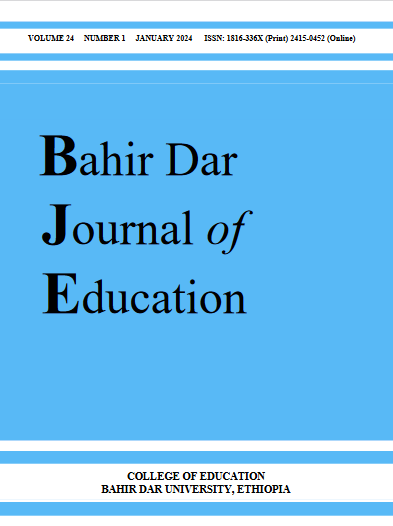Article Sidebar

Published:
Mar 20, 2024Updated:
2024-03-20Keywords:
Article Details

This work is licensed under a Creative Commons Attribution-NonCommercial-NoDerivatives 4.0 International License.
Authors who publish in this journal agree to the following terms:
- Authors retain copyright and grant the journal right of first publication with the work simultaneously licensed under a Creative Commons Attribution License that allows others to share the work with an acknowledgment of the work's authorship and initial publication in this journal.
- Authors are able to enter into separate, additional contractual arrangements for the non-exclusive distribution of the journal's published version of the work (e.g., post it to an institutional repository or publish it in a book), with an acknowledgment of its initial publication in this journal.
- Authors are permitted and encouraged to post their work online (e.g., in institutional repositories or on their website) prior to and during the submission process, as it can lead to productive exchanges, as well as earlier and greater citation of published work (See The Effect of Open Access).
Turuwark Zalalam Warkineh, Bahir Dar University
Assistant Professor and Ph.D. student in Curriculum and Instruction, College of Education, Bahir Dar University, Ethiopia
Abiy Menkir Gizaw, Bahir Dar University
Assistant Professor and Ph.D. student in Curriculum and Instruction, College of Education, Bahir Dar University, Ethiopia
Asrat Dagnew Kelkay, Bahir Dar University
Associate Professor, Department of Teacher Education and Curriculum Studies, College of Education, Bahir Dar University, Ethiopia.
Main Article Content
Review of “The dimensions of an instructional design knowledge base: Theory, research, and practice”
Turuwark Zalalam Warkineh
Abiy Menkir Gizaw
Asrat Dagnew Kelkay
Abstract
This review assesses the book titled "The instructional design knowledge base: Theory, research, and practice" authored by Richey, Klein, and Tracy, highlighting its emphasis on foundational knowledge, extensive theory base, and application to current Instructional Design (ID) practices. The book offers a comprehensive overview of ID theories from various disciplines, making it valuable for scholars, graduate students, educators, and practitioners in the field. It also guides decision-making and includes suggestions for future research, making it beneficial for researchers aiming to contribute to the field of ID.


